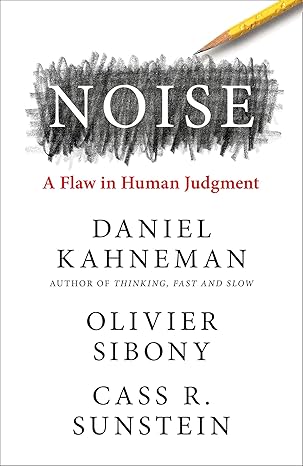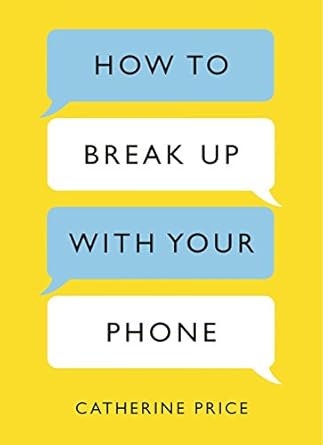Blog Title: Understanding Decision-Making Errors: Insights from “Noise” by Olivier Sibony, Cass R. Sunstein, and Daniel Kahneman
In “Noise”, Olivier Sibony, Cass R. Sunstein, and Daniel Kahneman explore the often-overlooked concept of noise—the random variability in human judgments that leads to inconsistent decisions. The book highlights how noise differs from bias and how it affects decision-making in fields like healthcare, law, business, and beyond. This blog delves into key lessons from “Noise,” explaining how organizations can identify and reduce these hidden errors to make more consistent and reliable decisions. Whether you’re a leader, manager, or professional, this book offers valuable insights to improve judgment and minimize costly decision errors in everyday life.
25 Lessons from “Noise” by Olivier Sibony, Cass R. Sunstein, and Daniel Kahneman
“Noise” explores the concept of decision-making errors and variability caused by irrelevant factors—referred to as noise—that affect judgments in fields ranging from law to medicine. Here are 25 key lessons from the book.
1. Understanding Noise: Noise is the unwanted variability in judgments that leads to inconsistency in decision-making processes.
2. Bias vs. Noise: While bias is a systematic error, noise represents random variability in decisions that leads to unfair outcomes.
3. Noise in Organizations: Even highly structured organizations suffer from noise, leading to inefficiency and inconsistent judgments in corporate decision-making.
4. Reducing Noise: To reduce noise, organizations must adopt systematic approaches, such as structured interviews, checklists, and clear criteria.
5. The Cost of Noise: Noise can result in significant financial, legal, and ethical costs for companies, governments, and individuals, impacting business performance.
6. Algorithmic Decisions: In some cases, algorithms can outperform humans in reducing noise, especially in fields like healthcare and finance.
7. Group Judgments: Group decisions can exacerbate noise due to differences in perspectives, leading to inconsistent outcomes in collective decision-making.
8. Calibration: Calibration of judgments—ensuring people apply consistent standards—is a key method to reduce noise in complex decision environments.
9. Pattern Recognition: Human minds are prone to pattern recognition, which can sometimes introduce noise into judgments, as people see connections that don’t exist.
10. Checklists as Tools: Checklists are simple but powerful tools to minimize noise by enforcing consistency in decision-making processes.
11. Expertise and Noise: Even experts are prone to noise; their judgments can vary significantly based on irrelevant factors like time of day or mood.
12. Noise Audits: Conducting a noise audit can help organizations identify the sources of noise and develop strategies to minimize it.
13. Consistency over Intuition: While intuition can be useful, relying on consistent, systematic processes often leads to better, less noisy outcomes.
14. System 1 vs. System 2 Thinking: Kahneman’s System 1 and System 2 thinking (fast and slow thinking) explains why noise occurs—rapid, intuitive decisions often lead to inconsistency.
15. Emotional Influence: Emotions and personal moods can introduce noise, leading to unpredictable outcomes in personal and professional judgments.
16. Noise in Justice Systems: The legal system suffers from significant noise, with judges delivering vastly different sentences for similar crimes due to personal biases and external factors.
17. Noise in Healthcare: Inconsistent medical diagnoses are a direct result of noise, affecting patient outcomes and increasing healthcare costs.
18. Hiring Decisions: Unstructured interviews introduce noise into the hiring process. Structured approaches and standardized assessments yield better, more consistent hires.
19. Data-Driven Decisions: Data analysis can help reduce noise by providing objective criteria for decision-making, especially in industries like finance and law.
20. Overconfidence and Noise: Overconfidence in one’s judgment leads to increased noise, as people are less likely to recognize the variability in their decisions.
21. Cognitive Diversity: While diversity of thought can reduce groupthink, it can also introduce noise if not managed effectively in team decision-making.
22. Mental Noise Filters: Training people to recognize their cognitive biases and improve critical thinking can reduce noise in everyday judgments.
23. The Role of Context: Environmental and contextual factors—like temperature, fatigue, or time of day—play a large role in introducing noise to decision-making.
24. Structured Decision-Making: Creating decision trees or guidelines helps minimize noise by enforcing consistency and reducing reliance on intuition.
25. Addressing Noise with Technology: New AI tools and decision-making technologies are being developed to help reduce noise across industries by offering consistent, data-backed insights.
The insights from “Noise” provide a roadmap for improving decision-making processes, enhancing organizational efficiency, and reducing errors. By understanding and mitigating noise, individuals and businesses can make more reliable, fair, and effective decisions.
“Start Your Website Journey Today – Exclusive Hostinger Discounts!”






